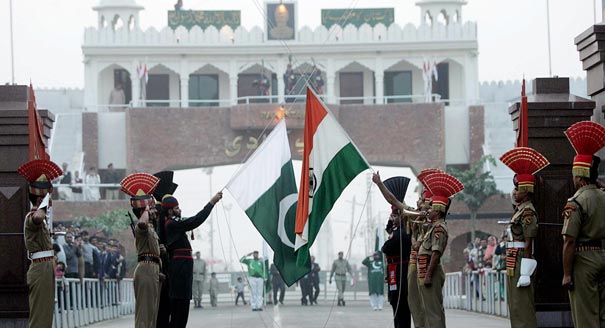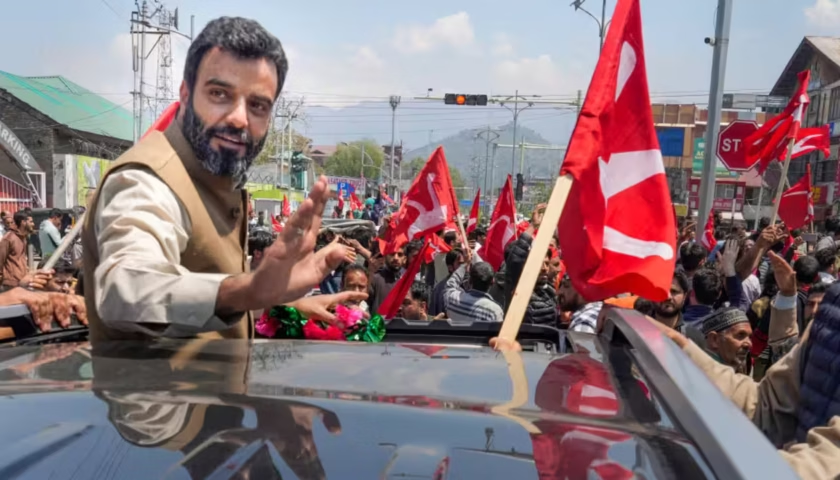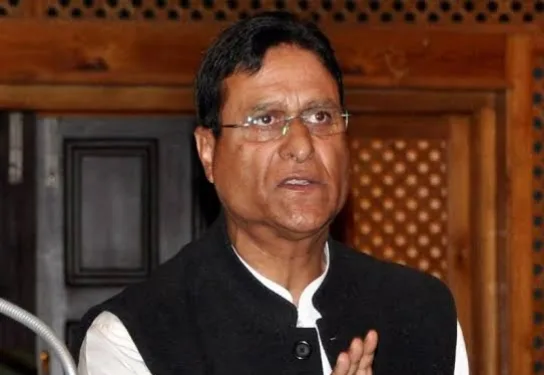War Averted – What India & Pakistan’s Ceasefire Means for Regional Stability
Srinagar 13 May 2025 : In a span of just four days, India and Pakistan, two nuclear-armed neighbors with a history of enmity, teetered on the edge of a full-scale war before pulling back to a fragile ceasefire. The rapid escalation and subsequent de-escalation, mediated by international actors, have left the world both relieved and wary of the volatile dynamics in South Asia. Here’s a detailed look at how the crisis unfolded and was resolved.
The Spark: A Deadly Attack in Kashmir
The latest chapter in the decades-long India-Pakistan rivalry began on April 22, 2025, with a terrorist attack in Pahalgam, a scenic town in Indian-administered Kashmir. Gunmen, later linked to Pakistan-based militant groups, killed 26 civilians, including tourists, in a brazen assault. India, which has long accused Pakistan of supporting separatist militants in Kashmir, condemned the attack as an act of state-sponsored terrorism. Pakistan denied involvement, but the incident set off a chain of events that brought the two nations to the brink of war.
Tensions in Kashmir, a disputed region divided by the Line of Control (LoC), have historically been a flashpoint. The Pahalgam attack, described as the deadliest in recent years, inflamed public sentiment in India, with calls for a strong military response growing louder.
Escalation: From Words to Weapons
By early May, diplomatic rhetoric gave way to military action. On May 7, India launched “Operation Sindoor,” a series of precision strikes targeting alleged terror launchpads in Pakistan and Pakistan-occupied Kashmir (PoK). Indian armed forces claimed to have eliminated key figures, including individuals linked to the 1999 IC-814 hijacking and the 2019 Pulwama attack, killing an estimated 35-40 Pakistani soldiers along the LoC.
Pakistan responded swiftly, targeting three Indian military bases and accusing India of unprovoked aggression. The tit-for-tat strikes escalated over four days, marking the most intense fighting between the two nations in half a century. Missiles struck a mosque near Muzaffarabad in Pakistani-administered Kashmir, and cross-border shelling damaged homes in the Neelum Valley. Both sides reported dozens of civilian and military casualties, with nuclear saber-rattling raising global alarm.
On May 9, the conflict disrupted civilian life further. The Indian Premier League (IPL) 2025 was suspended after a match in Dharamsala was abandoned due to security concerns, and 32 Indian airports halted civilian flights. Blackouts were enforced in Punjab and Rajasthan as drone activity was reported in border areas.
The Turning Point: International Mediation
As the world watched with bated breath, international actors stepped in to avert a catastrophe. On May 10, the United States, led by President Donald Trump and Secretary of State Marco Rubio, initiated urgent talks with Indian and Pakistani leaders, including Prime Ministers Narendra Modi and Shehbaz Sharif. The U.S. leveraged its diplomatic clout, engaging with India’s External Affairs Minister Subrahmanyam Jaishankar, Pakistan’s Chief of Army Staff Asim Munir, and national security advisors from both sides.
Trump announced a breakthrough on May 10 via Truth Social, declaring that India and Pakistan had agreed to a “FULL AND IMMEDIATE CEASEFIRE” effective at 5:00 PM IST. The agreement, brokered after overnight talks, was confirmed by India’s Foreign Secretary Vikram Misri, who noted that Pakistan’s Director General of Military Operations (DGMO) had initiated the call to India’s DGMO to propose the truce.
The ceasefire included a commitment to halt all military actions on land, sea, and air. Plans for broader talks at a neutral venue were mentioned by Rubio, though India’s Ministry of Information and Broadcasting clarified that no additional talks were agreed upon beyond the DGMO-level discussions.
Fragile Truce: Violations and Accusations
The ceasefire, however, faced immediate challenges. Within hours of the announcement, explosions were reported in Srinagar, Indian-administered Kashmir, prompting Jammu and Kashmir Chief Minister Omar Abdullah to post on X, “What the hell just happened to the ceasefire? Explosions heard across Srinagar!!!” Pakistan was accused of launching drone attacks and artillery shelling in Jammu, Srinagar, and along the LoC, violating the truce. India’s Foreign Secretary Misri condemned the actions, stating that the armed forces were instructed to respond forcefully to any further violations.
Pakistan denied the allegations, with its foreign ministry claiming India was responsible for continued firing. Prime Minister Sharif, in a media briefing, called the ceasefire a “victory” for Pakistan and expressed optimism about resolving contentious issues like Kashmir and the Indus Waters Treaty. India, however, dismissed these claims and announced plans to send a team to the United Nations with evidence of Pakistan’s support for terrorism.
Despite the early violations, the situation stabilized by May 11. No further drone activity was reported, and calm returned to border villages. Schools in Srinagar reopened, and the Indian Army confirmed that the situation was “under full control.”
Global and Domestic Reactions
The ceasefire was widely welcomed. U.N. Secretary General Antonio Guterres praised efforts to de-escalate, while the European Union’s Kaja Kallas called it a “vital step.” Sri Lanka and China also expressed support, with Chinese Foreign Minister Wang Yi urging a “comprehensive and lasting ceasefire” in talks with India’s National Security Advisor Ajit Doval.
In India, reactions were mixed. Bollywood celebrities like Raveena Tandon and Kareena Kapoor hailed the ceasefire, with Tandon posting, “Bharat should not bleed again.” Politicians like Karnataka Minister Priyank Kharge emphasized the need to continue the fight against terrorism, while CPI(M) leader Mohammed Yousuf Tarigami called the ceasefire a relief for war-weary border communities.
The Board of Control for Cricket in India (BCCI) moved quickly to resume IPL 2025, with plans to complete the remaining 16 matches by late May. Franchises began recalling overseas players, signaling a return to normalcy.
The Road Ahead: A Fragile Peace
While the ceasefire has held since May 11, the underlying issues—Kashmir, terrorism, and water-sharing disputes—remain unresolved. India’s decision to keep the Indus Waters Treaty in abeyance and Pakistan’s insistence on international engagement signal ongoing tensions. The DGMO talks scheduled for May 12 aim to reinforce the truce, but analysts warn that any misstep could reignite hostilities.
Michael Kugelman, a South Asia expert, described the ceasefire as “sudden and remarkable” but cautioned that its longevity depends on both sides’ commitment to restraint. The international community, particularly the U.S., will likely continue to play a watchdog role, with Trump being hailed as the “President of Peace” by some supporters for his mediation efforts.
For the people of Kashmir, who have borne the brunt of the conflict, the ceasefire offers a glimmer of hope. Residents in Muzaffarabad celebrated the truce, expressing a desire for lasting peace in a region scarred by decades of violence. Yet, as history has shown, peace between India and Pakistan is often fleeting, and the world will be watching closely to see if this ceasefire can endure.
Sources: Bloomberg, The Washington Post, Al Jazeera, The Hindu, The Economic Times, India Today, Hindustan Times, The New York Times, United States Department of State, and posts on X.




